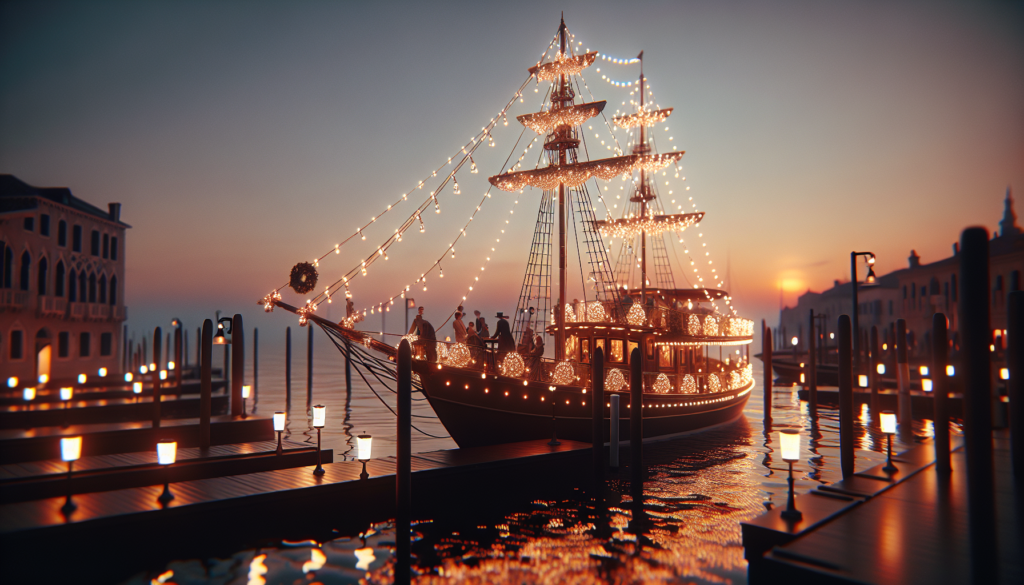Exploring the Depths of Boat Lighting: A Comprehensive Guide
When we think about boats, we often envision serene waters, adventurous voyages, and the thrill of exploration. However, one crucial element that often goes unnoticed but plays a significant role in the safety and aesthetics of boats is lighting. Boat lighting is not just about illuminating the vessel but also about navigation, signaling, and creating the right ambiance for a memorable experience on the water. In this article, we will delve into the world of boat lighting, exploring its various aspects, applications, and importance.
The Evolution of Boat Lighting
Boat lighting has come a long way from the simple lanterns and torches used by ancient mariners to navigate the seas. In the early days, boats relied on rudimentary lighting sources such as oil lamps and candles to guide them through the night. However, with advancements in technology, boat lighting has become more sophisticated and efficient.
Today, boats are equipped with a wide range of lighting options, including LED lights, halogen lamps, and fluorescent bulbs. These modern lighting solutions not only provide better visibility but also consume less energy, making them environmentally friendly. LED lights, in particular, have revolutionized boat lighting with their long lifespan, low power consumption, and high brightness.
The Importance of Boat Lighting
Proper boat lighting is crucial for the safety of both the passengers and the vessel. Navigation lights, for example, help other boats identify the position and direction of a vessel, reducing the risk of collisions in the water. Similarly, interior lighting is essential for creating a comfortable and inviting atmosphere on board, especially during nighttime journeys.
Moreover, boat lighting plays a vital role in signaling and communication. Bright and visible lights can be used to convey messages to other boats or to attract attention in case of emergencies. For commercial vessels, lighting regulations are strictly enforced to ensure compliance with international maritime laws and standards.
Types of Boat Lighting
There are several types of boat lighting, each serving a specific purpose and function. Navigation lights, also known as running lights, are used to indicate the position and direction of a vessel. These lights are typically red and green, with a white light at the stern. Anchor lights, on the other hand, are used when a boat is at anchor to signal its presence to other vessels.
Interior lighting includes cabin lights, cockpit lights, and deck lights, which are used to illuminate the interior spaces of the boat. These lights not only provide visibility but also enhance the overall aesthetics of the vessel. Underwater lights have also gained popularity in recent years, adding a touch of elegance and sophistication to boats.
The Future of Boat Lighting
As technology continues to advance, the future of boat lighting looks promising. LED lights are expected to become even more energy-efficient and durable, making them the preferred choice for boat owners. Wireless lighting systems are also on the rise, allowing for easy installation and customization of lighting schemes on boats.
Furthermore, there is a growing focus on eco-friendly lighting solutions for boats, such as solar-powered lights and bioluminescent technology. These sustainable options not only reduce the environmental impact of boats but also offer innovative and unique lighting possibilities.
Expert Opinions
According to marine lighting experts, the key to effective boat lighting is a combination of functionality and aesthetics. A well-lit boat not only enhances safety but also provides a memorable experience for passengers. Experts recommend using a mix of different lighting sources to create a dynamic and visually appealing environment on board.
Common Misconceptions
One common misconception about boat lighting is that brighter lights are always better. While bright lights are essential for visibility and safety, excessive lighting can cause glare and hinder night vision. It is important to strike a balance between brightness and comfort when designing the lighting setup for a boat.
Comparative Analysis
When comparing different types of boat lighting, LED lights stand out as the most efficient and reliable option. While halogen lamps and fluorescent bulbs are still used on some boats, LED lights offer numerous advantages, including lower energy consumption, longer lifespan, and higher brightness. In terms of cost-effectiveness and performance, LED lights are the clear winner.
FAQs
Q: Do I need special lights for my boat?
A: Yes, boats are required to have specific types of lights for navigation, signaling, and safety purposes. It is essential to comply with maritime lighting regulations to avoid penalties and ensure the safety of your vessel.
Q: Can I install boat lights myself?
A: While some boat owners may choose to install lights on their own, it is recommended to seek professional help to ensure proper installation and compliance with regulations. A marine electrician or lighting specialist can help you choose the right lights for your boat and install them correctly.
To Wrap Things Up
Boat lighting is a critical aspect of boating that should not be overlooked. From navigation and safety to aesthetics and ambiance, lighting plays a multifaceted role in enhancing the overall boating experience. By choosing the right lighting solutions and maintaining them properly, boat owners can enjoy safe and memorable journeys on the water.
Whether you are a seasoned sailor or a novice boater, understanding the importance of boat lighting and staying informed about the latest lighting trends can help you make the most of your time on the water. So, next time you set sail, remember to light up your boat and enjoy the magic of boating under the stars.






